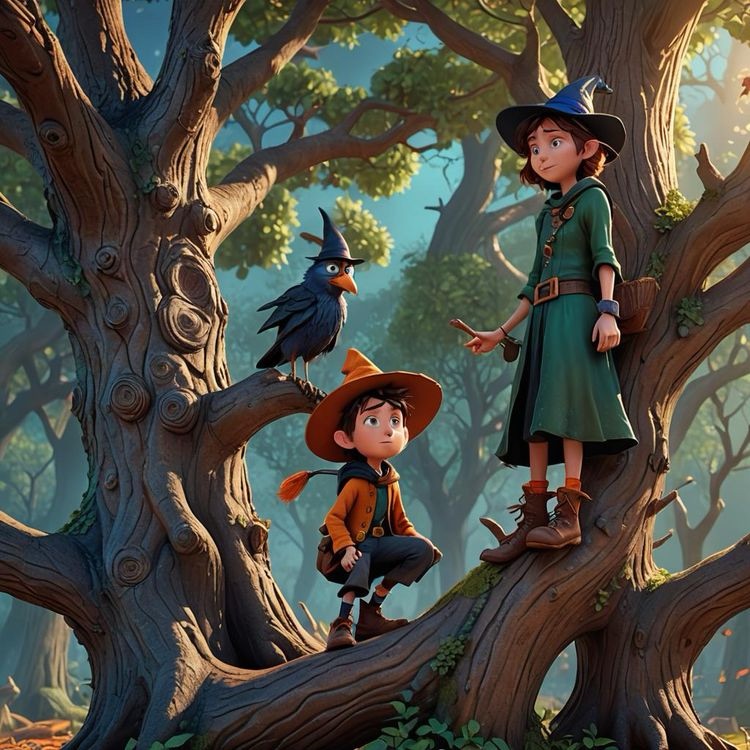In a time far away, where the winds like to play,
There were fairies and spirits who danced night and day.
They fluttered and twirled in the trees, in the air,
And helped all the people with tender, kind care.
But one gloomy day, with a dark, nasty plan,
Came a wizard who wanted to enslave every man.
He was wicked and cruel, with a cloak and a sneer,
And he tampered with freewill, bringing sorrow and fear.
He said, “I’ll be god! I’ll be ruler of all!
I’ll control every mind, big, tiny, or small!”
So he twisted the magic, the hearts, and the dreams,
Turning people’s own choices into sad, awful schemes.
He didn’t need armies, no swords, and no might—
He just played with their minds, so they’d never feel right.
Addiction and craving, afflictions and pain,
Were the shackles he used in his terrible reign.
Now, the fairies and spirits, once free and so bright,
Were bound to his will, trapped in endless dark night.
They were forced to make humans feel lost and confused,
By tempting and teasing, with tricks they’d not choose.
The fairies, who once made the forests a thrill,
Now whispered of cravings that bent people’s will.
They nudged and they pushed, though their hearts hurt inside,
For they had no choice—they could not run or hide.
The spirits, once peaceful and kind to the core,
Now sowed seeds of chaos, like never before.
They whispered dark thoughts into people’s heads,
Till they tossed and they turned, uneasy in bed.
And the people, poor people, they thought they were free,
But the wizard was laughing, as sly as can be.
For the choices they made, they believed were their own,
But the wizard controlled them, from his shadowy throne.
They craved what they shouldn’t, they wanted too much,
They fought and they argued and clung to a crutch.
Their actions were twisted, their lives full of pain,
And the wizard grew stronger, again and again.
But deep in their hearts, both the humans and sprites
Remembered a time full of wonders and lights,
When choices were theirs and the world wasn’t gray,
When the magic was balanced, and all had their say.
They knew that the wizard had messed with their minds,
But the thread of true freedom was something he’d not find.
Though weak and so hidden, it still flickered and glowed,
A reminder of life, where freewill once flowed.
The fairies still dreamed of the day they’d break free,
When they’d no longer tempt and just let humans be.
The spirits, they hoped, with a whisper and cheer,
That the wizard’s dark power would soon disappear.
And maybe, just maybe, both human and sprite
Would one day unite and put up a fight.
For if they could see that the power was theirs,
They’d throw off the wizard, escaping his snares.
Till that day, they wait in the woods, in the air,
Dreaming of freedom, with hope and a prayer.
For even in darkness, a spark can ignite,
And freewill, once broken, can again take flight.
So remember, dear child, though it might seem unclear,
Your choices are yours, let no wizard steer.
Stay true to your heart, and let magic stay bright,
For freewill is the key to make everything right.
